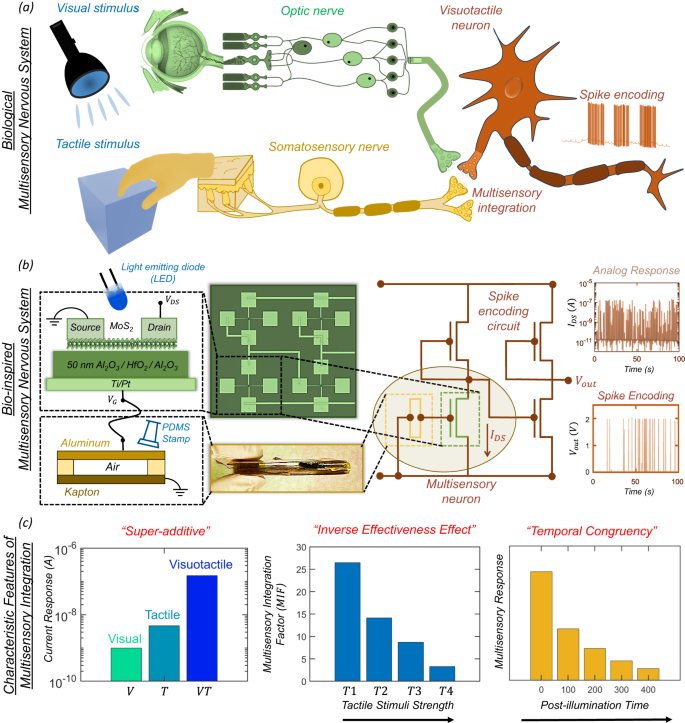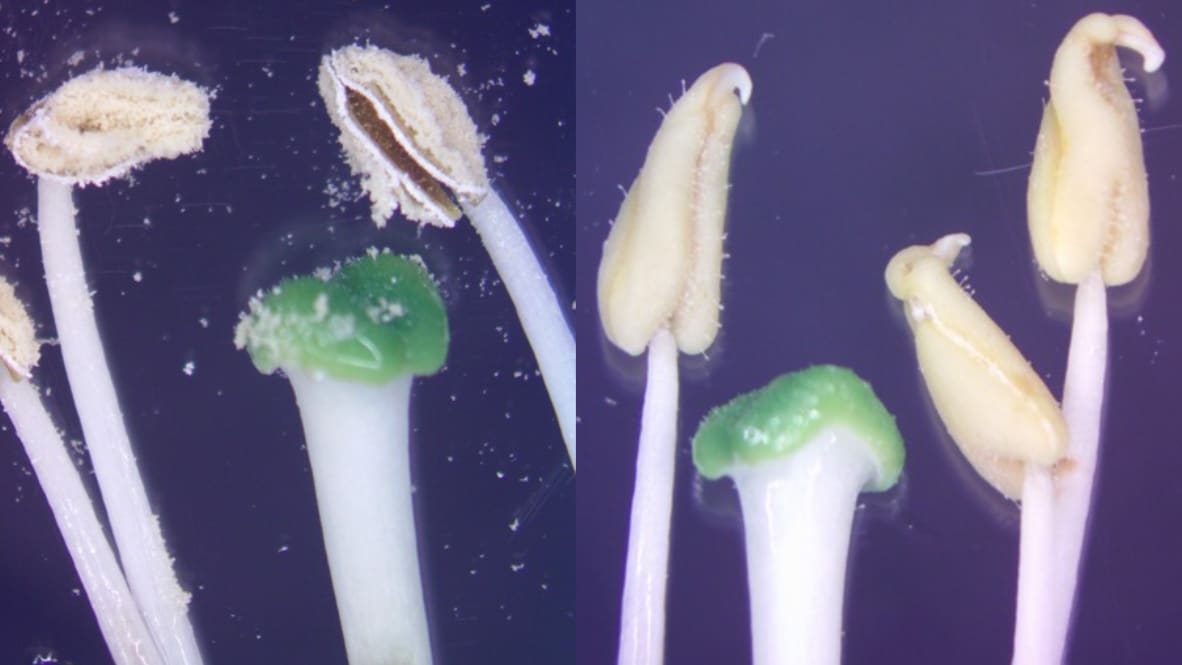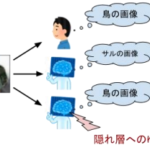2023-09-12 ペンシルベニア州立大学(PennState)
◆この技術は、ロボット、ドローン、自動運転車などが少ないエネルギーで環境を効果的に移動することができる可能性を示唆しています。これにより、AIのより環境に配慮した利用が可能になると期待されています。
<関連情報>
- https://www.psu.edu/news/engineering/story/making-ai-smarter-artificial-multisensory-integrated-neuron/
- https://www.nature.com/articles/s41467-023-40686-z
多感覚統合のためのバイオインスパイアされた視覚触覚ニューロン A bio-inspired visuotactile neuron for multisensory integration
Muhtasim Ul Karim Sadaf,Najam U Sakib,Andrew Pannone,Harikrishnan Ravichandran & Saptarshi Das
Nature Communications Published15: September 2023
DOI:https://doi.org/10.1038/s41467-023-40686-z

Abstract
Multisensory integration is a salient feature of the brain which enables better and faster responses in comparison to unisensory integration, especially when the unisensory cues are weak. Specialized neurons that receive convergent input from two or more sensory modalities are responsible for such multisensory integration. Solid-state devices that can emulate the response of these multisensory neurons can advance neuromorphic computing and bridge the gap between artificial and natural intelligence. Here, we introduce an artificial visuotactile neuron based on the integration of a photosensitive monolayer MoS2 memtransistor and a triboelectric tactile sensor which minutely captures the three essential features of multisensory integration, namely, super-additive response, inverse effectiveness effect, and temporal congruency. We have also realized a circuit which can encode visuotactile information into digital spiking events, with probability of spiking determined by the strength of the visual and tactile cues. We believe that our comprehensive demonstration of bio-inspired and multisensory visuotactile neuron and spike encoding circuitry will advance the field of neuromorphic computing, which has thus far primarily focused on unisensory intelligence and information processing.


